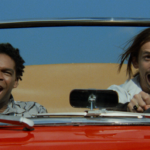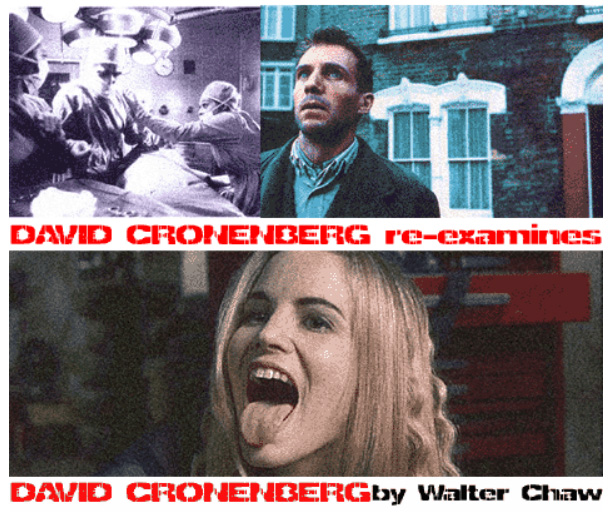**½/**** Image B+ Sound A Extras C+
directed by Lee Hirsch
by Travis Mackenzie Hoover Personal desires have a nasty habit of stepping on good intentions. It’s easy to think that by taking an interest in one corner of an issue/cause/milieu, you’re talking about all of it, and it’s just as easy to treat that corner on film while centring on that one thing you really like about it. Such is the case with Lee Hirsch, the well-meaning director of Amandla!: A Revolution in Four-Part Harmony (hereafter Amandla!). Anyone can see that he really, really, really likes South African freedom music, and with the examples his film gives, it’s not difficult to see why. But he’s so taken with its beauty and power that he ascribes to it magical powers it can’t possibly possess. Nobody can deny the importance of music to the South African struggle, but Amandla! is so in love with it that it makes it the entire struggle, a position there’s no chance in hell of it proving.
In all fairness, Amandla! is not dishonourable, and as a potted history of the anti-apartheid movement, it does pretty well. The film opens with the exhumation of Vuyisile Mini–billed as an activist and the greatest writer of freedom songs–before segueing into a race to connect the music with the events; we thus see how the freedom song evolved over time, from the initial driving of black Africans into tiny hovels like the notorious Meadowlands to the Sharpesville massacre, from the Soweto riots to the political surge of the Eighties. And we see that the music was inseparable from anti-apartheid itself: not only was it highly useful as a morale-booster and uniter of crowds, but it was also, with the aggressive song and dance of the toyi-toyi, the only means of intimidation for an unarmed movement faced with bullets and tear gas. So we note the names of the important figures (Mini, Hugh Masekela, Vusi Mahlasela) and hear the music, and surge with admiration for resourcefulness in the face of incredible adversity.
But somehow, it’s not enough. Hirsch isn’t sufficiently analytical to suggest the complexity of the music/movement relationship–he doesn’t place it in context with other political tactics, nor does he dig very deep into the shape of the music itself. While he’s good at reeling off names and giving snatches of song, he only occasionally contexualizes certain musical forms, letting it all wash over you in one amorphous racket. (In not singling out the ways in which the music works, he dilutes its power.) The only strong feeling one takes away from the film is that Hirsch thinks that the music is great–it doesn’t take particular shapes or do particular things, unless it’s providing the sum total of the fight, an assertion that’s almost accidentally made and which doesn’t do the subject any favours.
I might have been more charitable to Amandla! were it not for the fact that I had just seen another similar documentary, Heddy Honigmann’s 1993 Crazy. That film, a record of Belgian peacekeepers using music to keep them sane, was not programmatic and not limited to the music–it managed to speak to the power of the medium without making it the centre of the interviewees’ lives. I wonder what Honigmann would have made of the material of Amandla!, and how she would have evoked the use of song in the movement; she almost certainly would have made more interesting connections than Hirsch, who putters amiably but inarticulately through the unwieldy material and comes up with only a few underwhelming assertions that don’t hold up to scrutiny. I didn’t despise his film, but I didn’t get enough out of it–it’s like the Coles notes to something much bigger that I’d much rather have watched unabridged.
THE DVDArtisan’s 1.77:1 anamorphic widescreen DVD of Amandla! is good, if not great. This is the rare documentary in which the archival footage looks better than the newly-shot interviews: while definition on stock images is generally sharp and clear, the interviews are a bit indistinct, with soft definition and slightly bleeding colours. Still, it’s a minor quibble given the picture’s multimedia origins, and that the main event here is the words and music, anyway, both of which come through splendidly in Dolby Digital 5.1. Understandably, there’s not much surround action until the music clips come on, but when they do they pack a wallop, especially during the toyi-toyi segments, the subwoofer kicks in and punches up the bass.
A mountain of supplemental material that’s less exhaustive than exhausting accompanies the disc. First up is a 20-minute Q&A session with director Hirsch, producer Sherry Simpson, and singer Vusi Mahlasela, fielding questions from a post-screening audience: we learn that Hirsch first became interested in the subject as a high school activist, but precious little else. “Vusi at Joe’s Pub” (13 min.) is more interesting: it’s Mahlasela performing the songs “When You Come Back”, “Red Song,” and “Silange Mabele,” and to say he does them well is putting it mildly. Unfortunately, we are then hit up with a Dave Matthews interview (13 min.) in which the South African-born singer is asked his opinion of the film. He basically reiterates most of its salient points while adding some vague insights from his own recollections.
Thus commences a full forty-five minutes of deleted scenes. Some of these are interesting–there are some lamentations on the demise of the freedom song in the post-apartheid era, and the full 12-minute version of Hugh Masekela’s epic “Stimela,” but most of these omissions are too brief to leave any real dent on the consciousness. After these come “sing-alongs” to “Nkosi Sikelel’ iAfrica,” “Thina Sizwe,” “Magoliwe,” and “Usi Letela Uxdlo,” the songs, unfortunately, taken right out of the film, meaning we have to sing over intrusive interview footage.
A commentary featuring Hirsch and Simpson yields a few insights (the roof on which Commissar is dancing in the opening moments belongs to the notorious police building that saw the torture and killing of countless activists) yet underscores the amorphous nature of the project’s conception: Hirsch was so determined to make the film entirely about the music that he had to be talked into giving it a broader context. Rounding out the disc are production notes by Hirsch, Simpson and editor Johanna Demetrakas (they’re impassioned but needless), the theatrical trailer, trailers for The Temptations and Standing in the Shadows of Motown, and Artisan propaganda pertaining to their upcoming Special Editions.
103 minutes; PG-13; 1.77:1 (16×9-enhanced); English DD 5.1, English DD 2.0 (Stereo); CC; DVD-9; Region One; Artisan

![Amandla! A Revolution In Four Part Harmony [DVD]](https://m.media-amazon.com/images/I/51ZT9hicb-L._SL500_.jpg)




